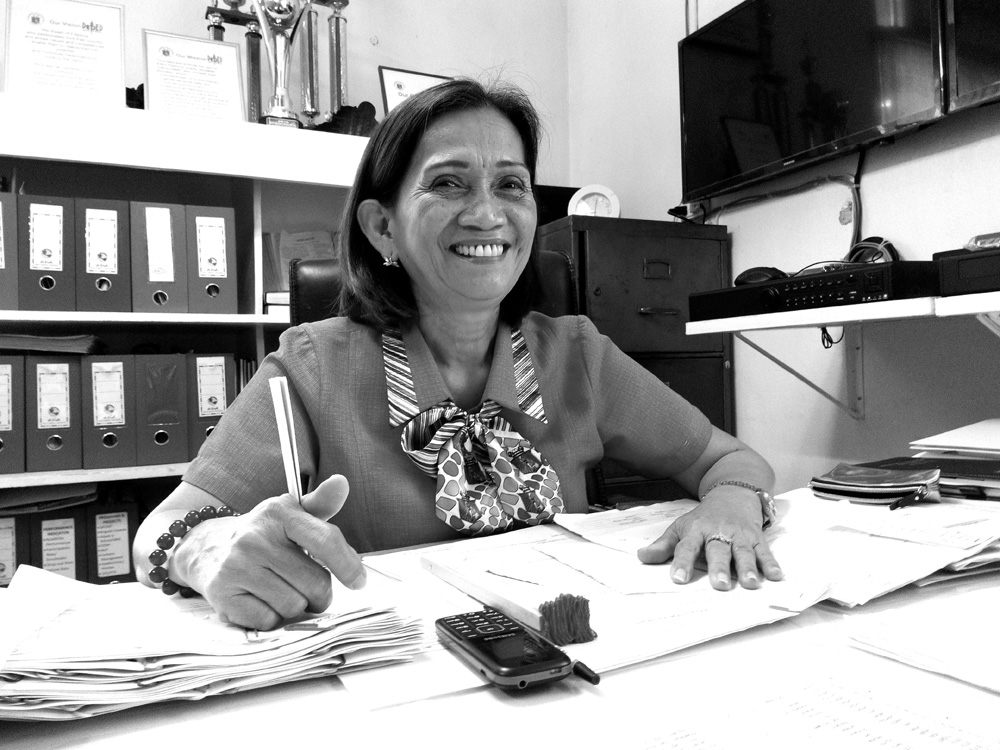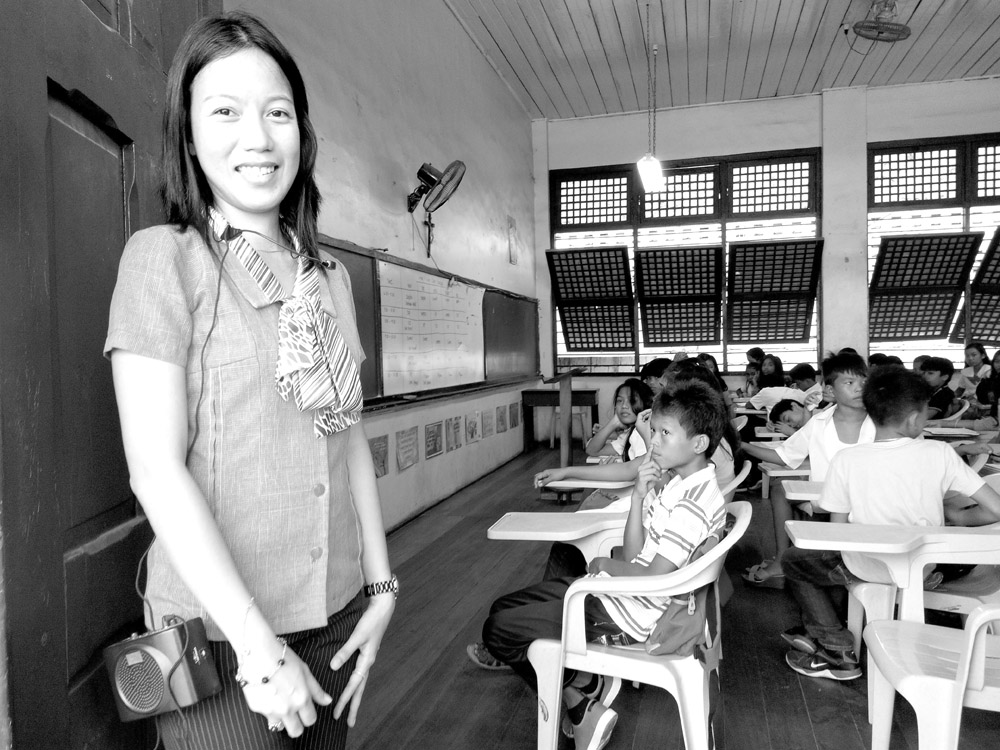
As classes opened on Monday, Rochelle Marie Bolotaolo’s voice rises above the usual classroom noises and distractions, such as the clatter of students hustling through the hallway, and a noise from an on-going construction of classroom buildings. The students can still hear her clearer. But that’s not because she’s shouting rather, Bolotaolo is addressing her students through a wireless microphone clipped to her uniform.
Bolotaolo, 33, who has been teaching at the already congested Dr. Cecilio Putong National High School (DCPNHS) for five years, uses a portable sound system (lavalier or lapel microphone), a wireless, hands-free microphone to be heard by her students.
“There is buzzing noise outside so I need to use a lapel,†said Bolotaolo.
She said she has been using the portable sound system for four years. She said she found it practical and effective.
“It is very effective. Aside from the microphone there is a USB I can use for my lesson,†she said.
Without the gadget, Bolotaolo said it would be next to impossible for her students to hear her as the noise of ongoing construction of more classrooms in DCPNHS drowns out class lessons.
And with 50 students, Bolotaolo can’t expect to be heard clearly by everyone in her class.
Bolotaolo’s class can be considered oversized as the ideal class size is only 45 students for high school and 35 for elementary school.
She said she had experienced fatigue before because she had to strain her voice.
It’s the effect of lack of classrooms and more students as a result of the K-12 program that adds more years to basic elementary and high school education to meet international standards.
Another Grade 7 teacher, Jeanette Yenogacio, said she used the sound system to prevent too much strain on her vocal chords.
“I should preserve my voice because I still have six sections to handle,†Yenogacio said. The gadget, she said, helps her students,†even those seated at the back,†to hear her.
Boloatolo and Yenogacio bought the gadgets using their own money. They, however, don’t mind dipping into their own pockets because they know it would be for the benefit of their students.
“I believe better sound will translate into better learning. I noticed the students can absorb the lessons well,†said Yenogacio.
Yenogacio noticed that her students were attentive and focus on the class.
“My students can hear me clearer and better,†she said.
Yenogacio, who was one of the teachers who used the portable sound system, recalled that she lost her voice a couple of times and suffered several sore throats when she was not using the gadget while teaching.
She said before none of the teachers wanted to wear the gadget. At least seven out of 150 teachers at DCPNHS are using lapel mic.
“At first, none of us really wanted to wear mic lapel but years after we get used to it,†she said.
While education officials had said everything is set for the start of the school year and senior high school, perennial problems remain.
Class sizes had to be expanded and schools use one room for two or more classes, held by shifts, to cope with lack of classrooms.

Virgilia Omictin, DCPNHS principal, said she is encouraging teachers to use portable sound system since it is helpful.
“It can prevent teacher’s fatigue,†she said.
She also said by using the gadget, it can decrease teachers’ voice strain, increase students’ attention and aid in classroom participation.
“I think it has had an impact in the classroom teaching,” Omictin said.
DCPNHS, which has at least 5,000 students this school year, hold classes from 6 a.m. to noon and from noon to 6 p.m. to accommodate two classes per room.
Omictin anticipated the school population to increase by 4 or 5 percent.
Grade 11, or senior high school, classes are to be held in morning and afternoon shifts.
In August, Omictin said two buildings with 16 classrooms would be finished and these could ease the shortage of rooms.
“But we are K-12 ready,†quipped Omictin.
